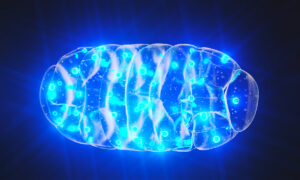The Different Types of Bipolar Disorder, Including Cyclothymia
Medically Reviewed by Kathryn Keegan, MD

There are four basic types of bipolar disorder, (1) and while each type has a somewhat different set of symptoms, all of them are characterized by noticeable changes in mood, energy, thinking, concentration, and behavior. These changes consist of manic episodes, which are periods of feeling extraordinarily up, and depressive episodes, which are periods of feeling hopeless and sad. Hypomanic episodes are a milder form of manic episodes.
Bipolar I Disorder
This type of bipolar disorder is diagnosed when manic episodes last at least seven days and are accompanied by psychotic features, or the manic symptoms are severe enough to require immediate hospitalization to prevent harm to oneself or others. Depressive episodes, typically lasting at least two weeks, also often occur. A person may have manic episodes with some depressive features or depressive episodes with some manic features.
Bipolar II Disorder
This type of the disorder is diagnosed when a pattern of depressive episodes and hypomanic episodes is present, but the full-blown manic episodes of bipolar I do not occur. Hypomanic episodes have the same symptoms as manic episodes but are shorter in duration and less severe. Bipolar II disorder is more likely to be mistakenly diagnosed as depression.
Cyclothymia
Cyclothymia is a milder form of bipolar disorder that’s sometimes referred to as cyclothymic disorder. Both cyclothymia and bipolar disorder are characterized by extreme mood swings, from the highs of mania to the lows of depression, with short periods of neutral time in between. The difference lies in the intensity: People with bipolar disorder will experience clinically diagnosed mania and usually major depression, while people with cyclothymia have low-grade depression and mild symptoms of hypomania. (2)
With cyclothymia, “It may seem like you’re just going through a string of good days and a string of bad days,” says psychiatrist Kathleen Franco, MD, of the Cleveland Clinic Lerner College of Medicine in Cleveland. “But the mood shifts keep going, and there’s little neutral time in between.”
Symptoms of Cyclothymia: What to Look For
Besides cycling between the two mood extremes, there are other criteria that will determine a diagnosis of cyclothymia:
- You’ve experienced these mood swings for at least two years.
- At least once in the two-year period, you have had significant distress or social impairment.
- Your symptom-free intervals last no more than two months.
- Your symptoms don’t meet the requirements of any other bipolar disorder.

9 Most Common Triggers for Bipolar Mood Episodes
Other Specified and Unspecified Bipolar and Related Disorders
When someone has bipolar disorder symptoms that do not exactly match the categories listed above, they may receive a diagnosis of “other specified and unspecified bipolar and related disorders.” (1)
Cyclothymia vs. Bipolar Disorder: What’s the Difference?
Only a doctor can accurately make the clinical distinction between cyclothymia and bipolar disorder. But generally speaking, the symptoms of a major bipolar depression are debilitating and can include an inability to get out of bed, feeling overwhelmed or unable to make even the simplest decisions, and having obsessive thoughts, especially about loss, personal failure, or guilt. These symptoms, which can be long-lasting, affect your ability to function and can dramatically reduce your quality of life.
The same kinds of symptoms may be present in a cyclothymic depression, but they’re less severe in degree (though they can have a significant impact on quality of life and social functioning).
The cyclothymic symptoms may last no more than two weeks, and they may cause less of a disruption in your daily routine.
The true mania of bipolar disorder, essentially the opposite of major depression, can likewise be debilitating. It may be accompanied by feelings of euphoria and indestructibility — a sense of being on top of the world — that can include reckless behaviors such as driving too fast or abusing drugs or alcohol.
A manic person may go a day or two without sleeping. They may talk rapidly, moving from topic to topic without making much sense.
The hypomania symptoms seen with cyclothymia are less dramatic and not as long-lasting. They may be so mild as to seem normal — mild sleeplessness, for example, or chattiness and increased energy.
While some people living with cyclothymia are happy to go without treatment, it may be important for others to recognize and monitor the condition: It’s estimated that there’s a 15 to 50 percent risk that people with cyclothymic disorder may go on to develop full-blown bipolar disorder. (3)
This escalation is especially prevalent if bipolar disorders run in the family.
Although preventive treatment hasn’t been identified yet, there is some hope among researchers that early treatment for cyclothymia may prevent full-blown bipolar disorder from developing.
What Are the Treatment Options for Cyclothymia?
As with bipolar disorder, there’s no cure for cyclothymia, but it’s possible to manage the condition with effective treatment.
Medicines usually prescribed for bipolar disorder, such as mood stabilizers, don’t always work for cyclothymia. More often, treatment for cyclothymia involves talk therapy with a trusted psychologist who can help people recognize the triggers that may increase the severity and frequency of their mood swings.
More About Talk Therapy
For example, mood shifts can be triggered by lack of sleep, alcohol consumption, or traveling through many time zones. Cognitive behavioral therapy, in which a therapist will help you develop strategies to identify unhealthy or negative behaviors and replace them with positive ones, can also be beneficial to people with cyclothymia. (4)
Another approach is interpersonal and social rhythm therapy. This form of therapy works on stabilizing your daily rhythms of sleeping, waking, and eating. Establishing a consistent routine around sleep, diet, and exercise can help with mood disorders. (4) Light therapy, which is used to treat seasonal affective disorder and help regulate your body’s biological rhythms, may also be used to help treat cyclothymia.
In time and with the help of a trusted support team — beginning with your doctor — you can learn to manage your moods and your response to them, and live a life less disrupted by cyclothymia.








